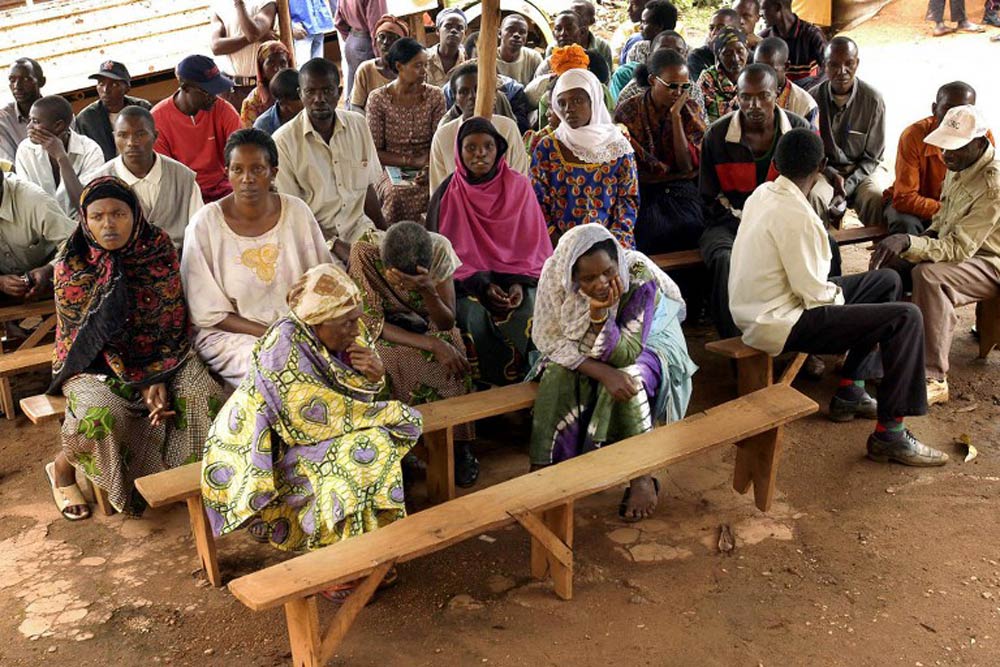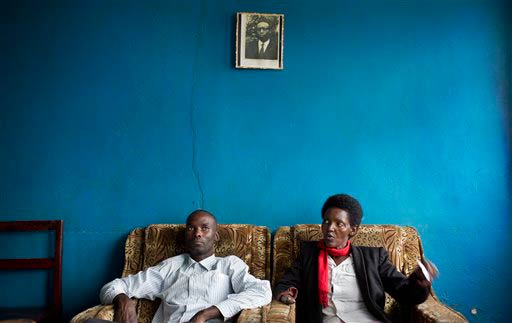Emotional scenes played out in Rwanda this week as the country commemorated 20 years since the genocide that left close to a million people dead.
April 1994 is a long time ago, but physical and emotional scars remain fresh.
One wonders, every time the word Rwanda is mentioned, how the country managed to pull itself out of one of the darkest periods in the history of human existence.
Even more astounding is how people in Rwanda managed to find each other, forgive and bridge the gap that was left by the ethnic cleansing that happened 20 years ago.
Other nations are still struggling to find themselves almost a century after wars.
But Rwanda’s is a miracle of unimaginable scale. I know this because I walked the roads the killers walked and visited the sites of mass murders, where only skulls and bloodied garments now bear testimony to the gruesome events that began in April 1994.
I saw this miracle in the eyes of Alice Mukarurinda when she spoke of her boyfriend, Emmanuel Ndayisaba. Theirs is a tale of post-genocide forgiveness.
I met the two in June 2012 when I was a guest of the Rwandan president during the closure of the Gacaca courts – a locally-brewed justice system where trials where held publicly and community members, including women, were elected as judges. It was modelled on South Africa’s Truth and Reconciliation Commission but had better results.
During 2001 until they closed in June 2012, the Gacaca courts heard over two million cases and in the process healed the wounds of many. Even at the closing function, more Rwandans were still wishing it would remain operational.

Although criticised by few human rights organisations for not subscribing to minimum legal standards, the courts not only heard many cases which would have taken a conventional court years to finish, but they was far cheaper to maintain. Compare it to the International Criminal Tribunal for Rwanda, which in 2012 had cost $1.7-billion to run, having only tried 60 suspects in its 17 years of existence.
Most of the people I spoke to in Rwanda in 2012, both victims and perpetrators, were happy with the Gacaca tribunal process thus far. This was despite the fact that many families still didn’t know how their family members were killed or where they were buried.
Mass graves were still being discovered in June 2012, which disputes the 800 000 fixed figure of those killed.
In Nyamwata, at a church in which hundreds were killed as they sought safety from the Hutus, families were still coming through to clean the recently exhumed bones in bags which they believe belong to their loved ones.
I asked how they knew the bones belonged to their families members, and they said just by cleaning the bones, it gave them some kind of closure. They felt they had paid their last respects to those they loved, those they will never see again.
But it was how forgiveness brought people from tribal divides together that fascinated me.
I met Alice at one of the functions held to bring down the curtain on these special courts in 2012. Alice still bears machete scars on her head, cheek and neck, and only has half of her arm. The other half was cut off. All this happened one day in April 1994 when Hutu militia came to her village and went on a killing spree of anyone who was slimmer and taller – an indication that they were Tutsis.
Within a few minutes, 33 members of her family were killed in front of her, including her nine-month-old daughter.
During the killing spree, one bearded Hutu man unleashed a machete several times on Alice’s head, and blood gushed onto her face. He tried to finish her, but she managed to use her right arm to block the machete. Her arm got cut, severed just above the wrist. The bearded man sliced her face. His colleague pierced a spear through her left shoulder.
She fainted. The men thought she was dead, and left. She was found alive three days later.
The bearded man who severed Alice’s arm with a machete is Emmanuel Ndayisaba. He is her boyfriend now. The two met during one of the Gacaca court sessions. They were standing on opposing sides – Emmanuel, a genocide perpetrator and Alice, the victim who needed answers.

That day, he confessed to the court what he did to Alice and her family. In fact he was surprised to see her alive. She remembered him because of his beard, the same beard he had when he killed her family members, and the same beard that always came to mind when someone asked her about the killings.
Alice told me at first that it was difficult to forgive Emmanuel. She cried until she had no more tears. But she forgave Emmanuel and today the two are very close. “I have learnt to forgive, even the one who tried to kill me,” she told me.
Alice and Emmanuel continue to spread the message of forgiveness at forums where they talk about reconciliation. They hope that this will help heal the wounds of the past atrocities. They have become an inspiration for those who believe in the impossibility of reconciliation after brutal ethnic conflict such as the one that happened in Rwanda.
While theirs is an extraordinary story of reconciliation and forgiveness, it remains to be seen if this will inspire the nation to put its past behind it. Two decades later, many hope that Rwandan leaders and residents will give meaning to the messages of “Never Again” and chart the country to extraordinary healing and hope. To me, that is what is there for Rwanda to celebrate as it commemorates 20 years.
Isaac Masilo Mangena is a communicator/activist. He has spent much of the past decade in newsrooms around Africa, and visited Rwanda as a journalist in 2012. He believes that the African dream will not die.
